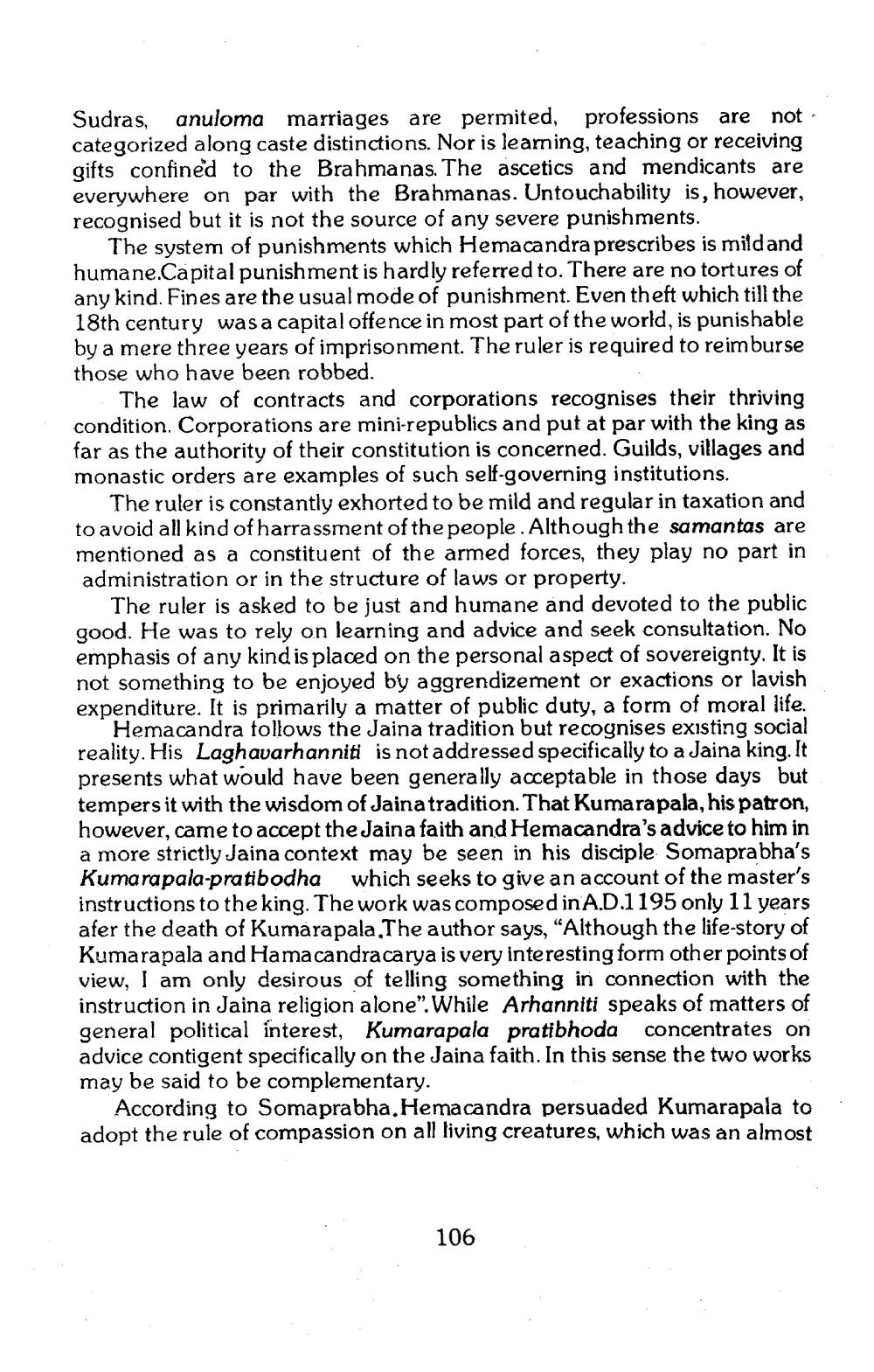________________
not
Sudras, anuloma marriages are permited, professions are categorized along caste distinctions. Nor is leaming, teaching or receiving gifts confined to the Brahmanas. The ascetics and mendicants are everywhere on par with the Brahmanas. Untouchability is, however, recognised but it is not the source of any severe punishments.
The system of punishments which Hemacandra prescribes is mild and humane.Capital punishment is hardly referred to. There are no tortures of any kind. Fines are the usual mode of punishment. Even theft which till the 18th century was a capital offence in most part of the world, is punishable by a mere three years of imprisonment. The ruler is required to reimburse those who have been robbed.
The law of contracts and corporations recognises their thriving condition. Corporations are mini-republics and put at par with the king as far as the authority of their constitution is concerned. Guilds, villages and monastic orders are examples of such self-governing institutions.
The ruler is constantly exhorted to be mild and regular in taxation and to avoid all kind of harrassment of the people. Although the samantas are mentioned as a constituent of the armed forces, they play no part in administration or in the structure of laws or property.
The ruler is asked to be just and humane and devoted to the public good. He was to rely on learning and advice and seek consultation. No emphasis of any kind is placed on the personal aspect of sovereignty. It is not something to be enjoyed by aggrendizement or exactions or lavish expenditure. It is primarily a matter of public duty, a form of moral life.
Hemacandra follows the Jaina tradition but recognises existing social reality. His Laghavarhanniti is not addressed specifically to a Jaina king. It presents what would have been generally acceptable in those days but tempers it with the wisdom of Jaina tradition. That Kumarapala, his patron, however, came to accept the Jaina faith and Hemacandra's advice to him in a more strictly Jaina context may be seen in his disciple Somaprabha's Kumarapala-pratibodha which seeks to give an account of the master's instructions to the king. The work was composed in A.D.1195 only 11 years afer the death of Kumarapala.The author says, "Although the life-story of Kumarapala and Hama candracarya is very interesting form other points of view, I am only desirous of telling something in connection with the instruction in Jaina religion alone". While Arhanniti speaks of matters of general political interest, Kumarapala pratibhoda concentrates on advice contigent specifically on the Jaina faith. In this sense the two works may be said to be complementary.
According to Somaprabha. Hema candra persuaded Kumarapala to adopt the rule of compassion on all living creatures, which was an almost
106




